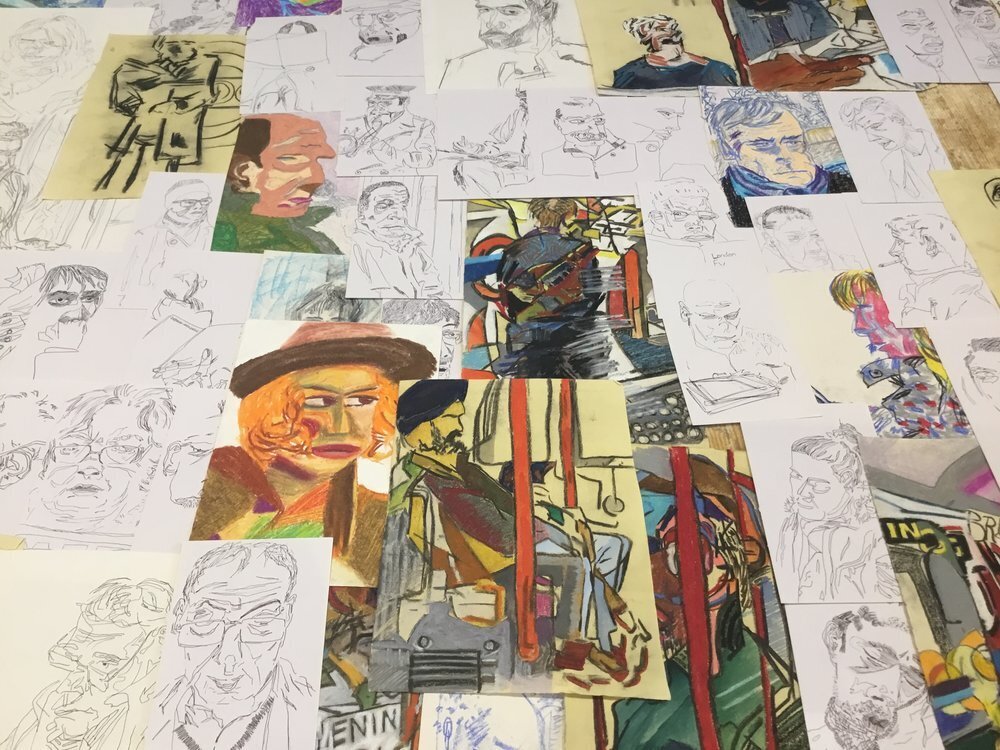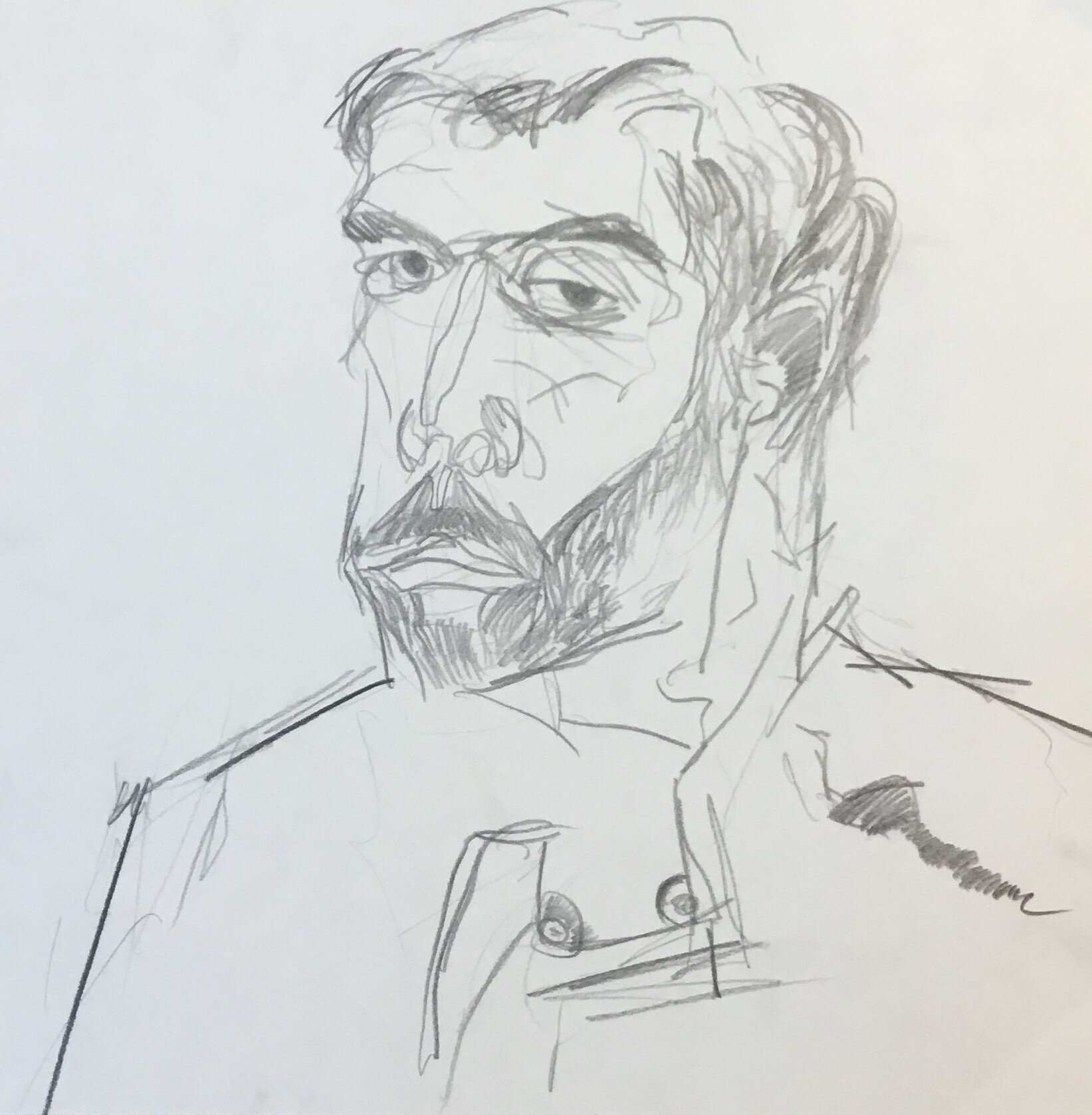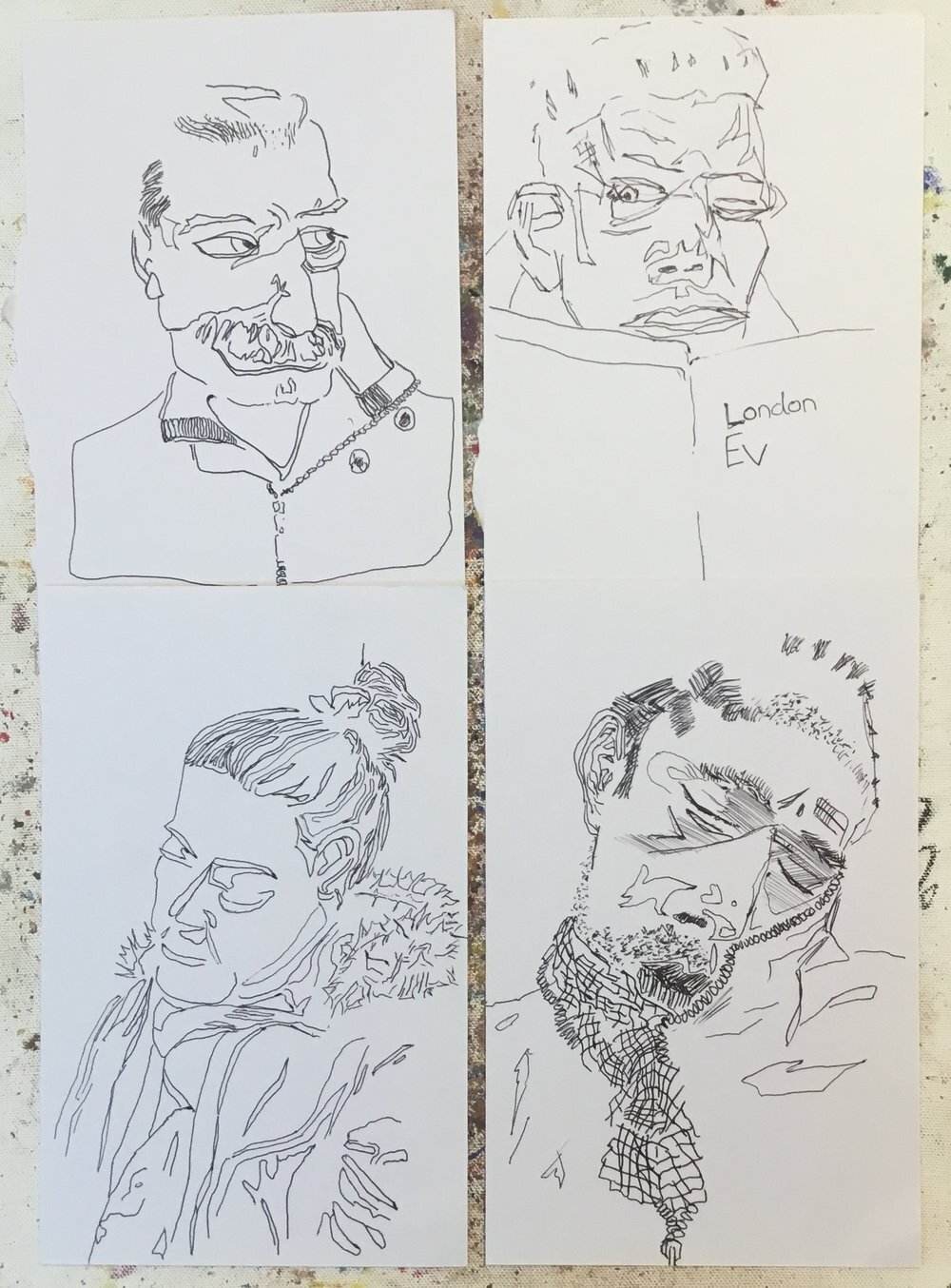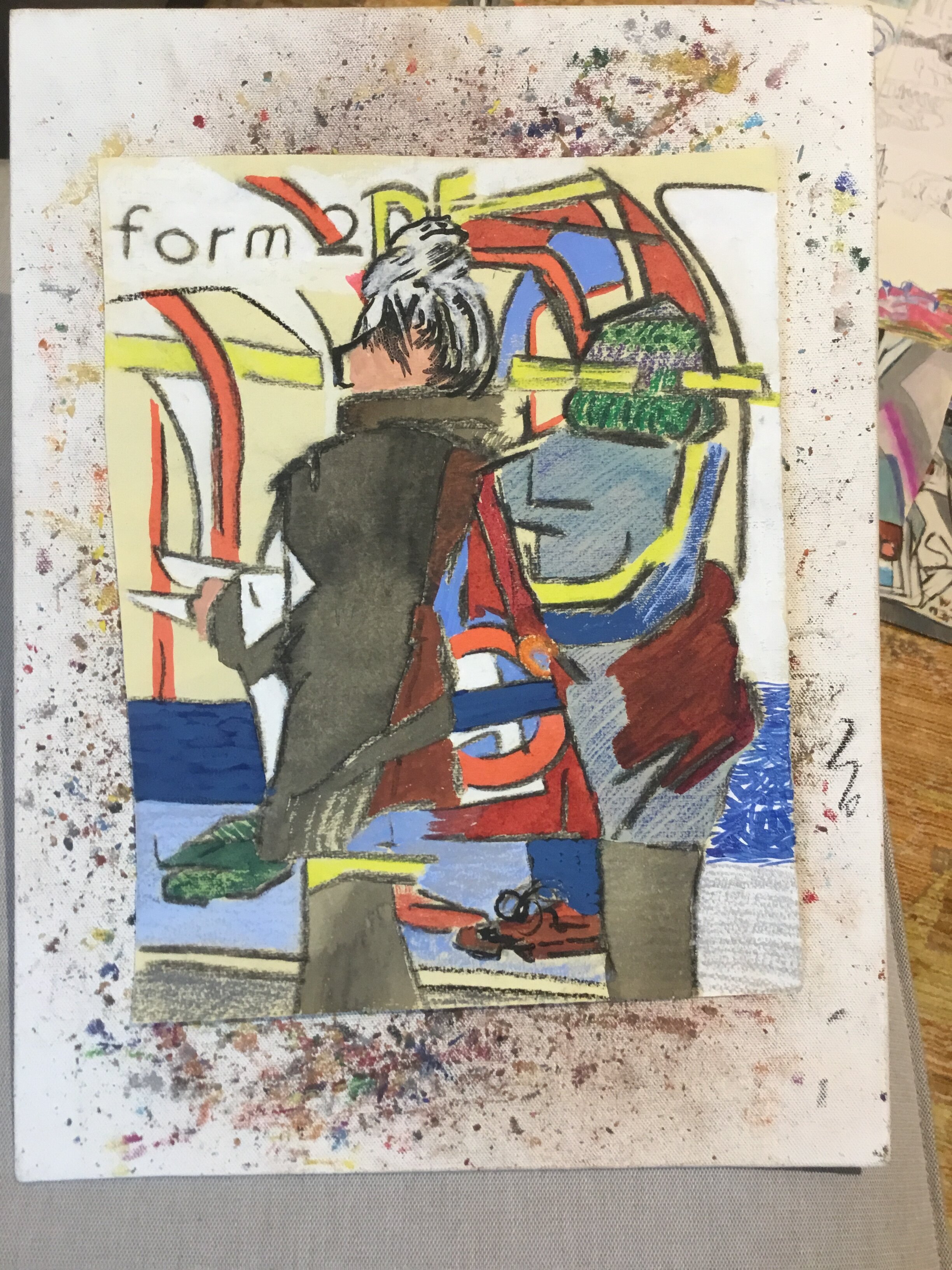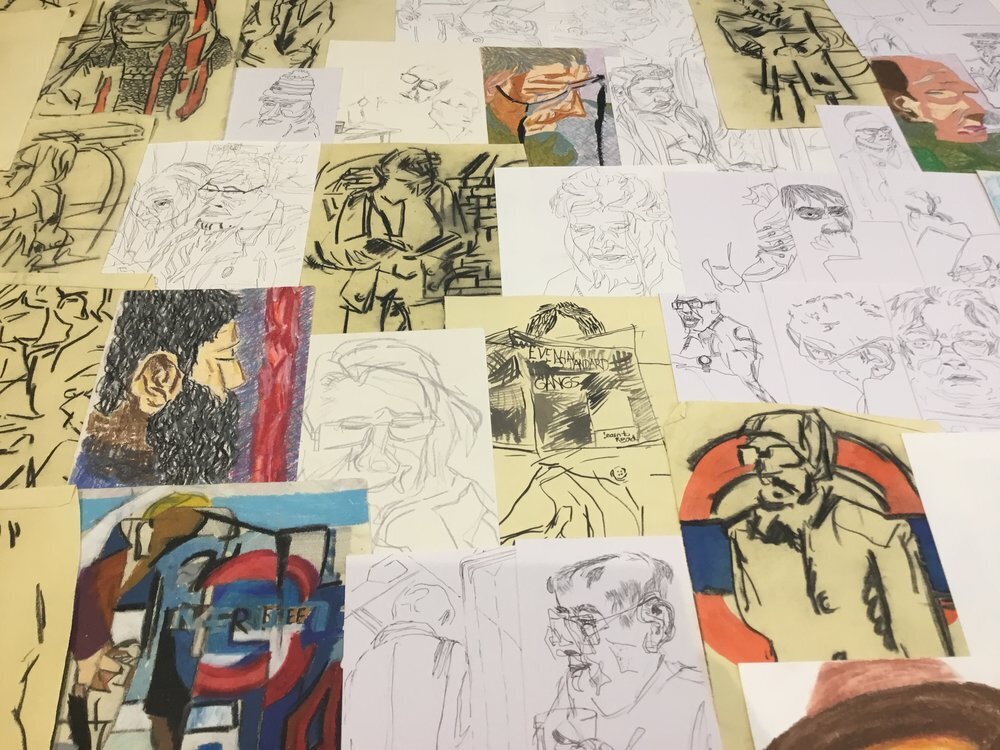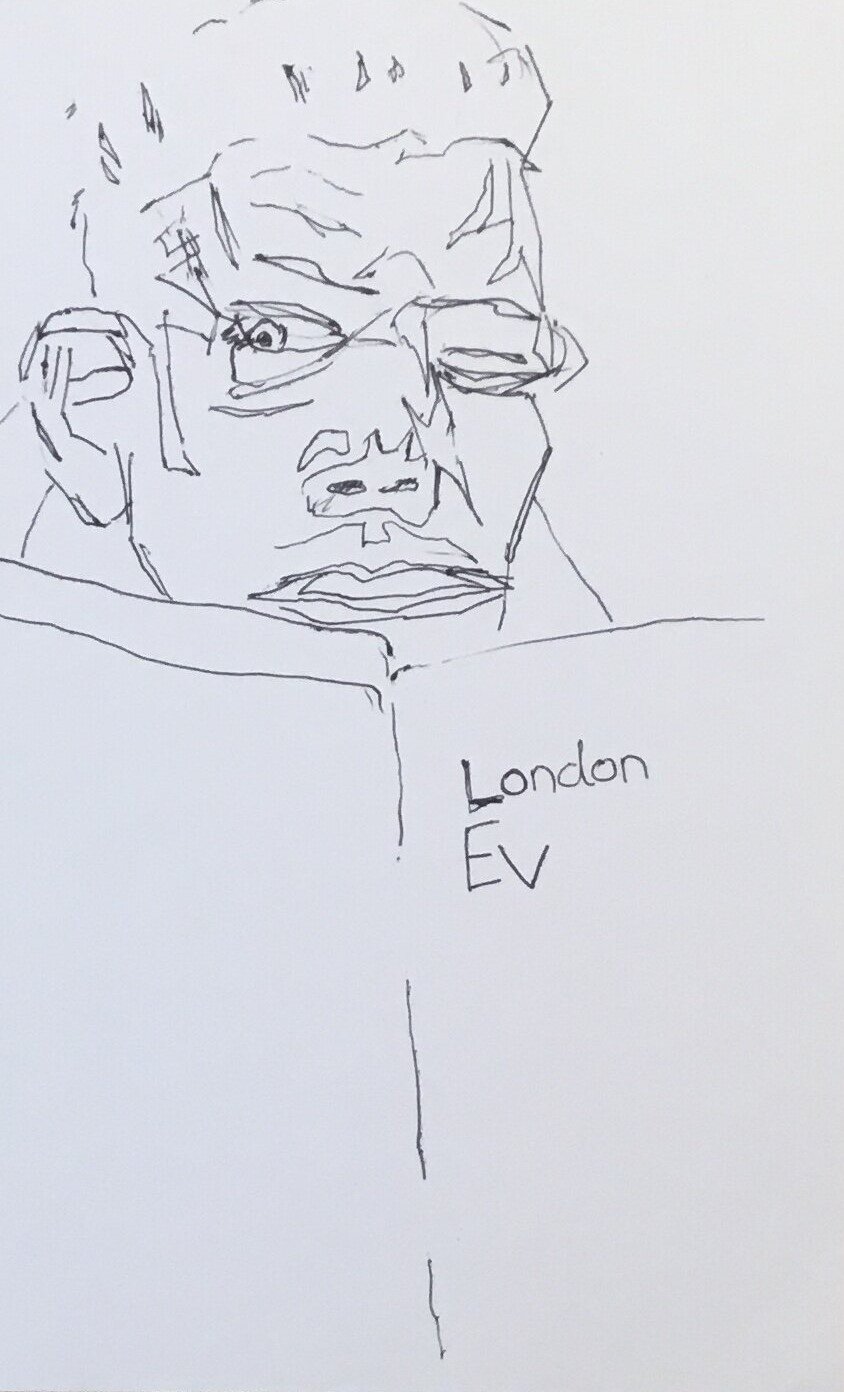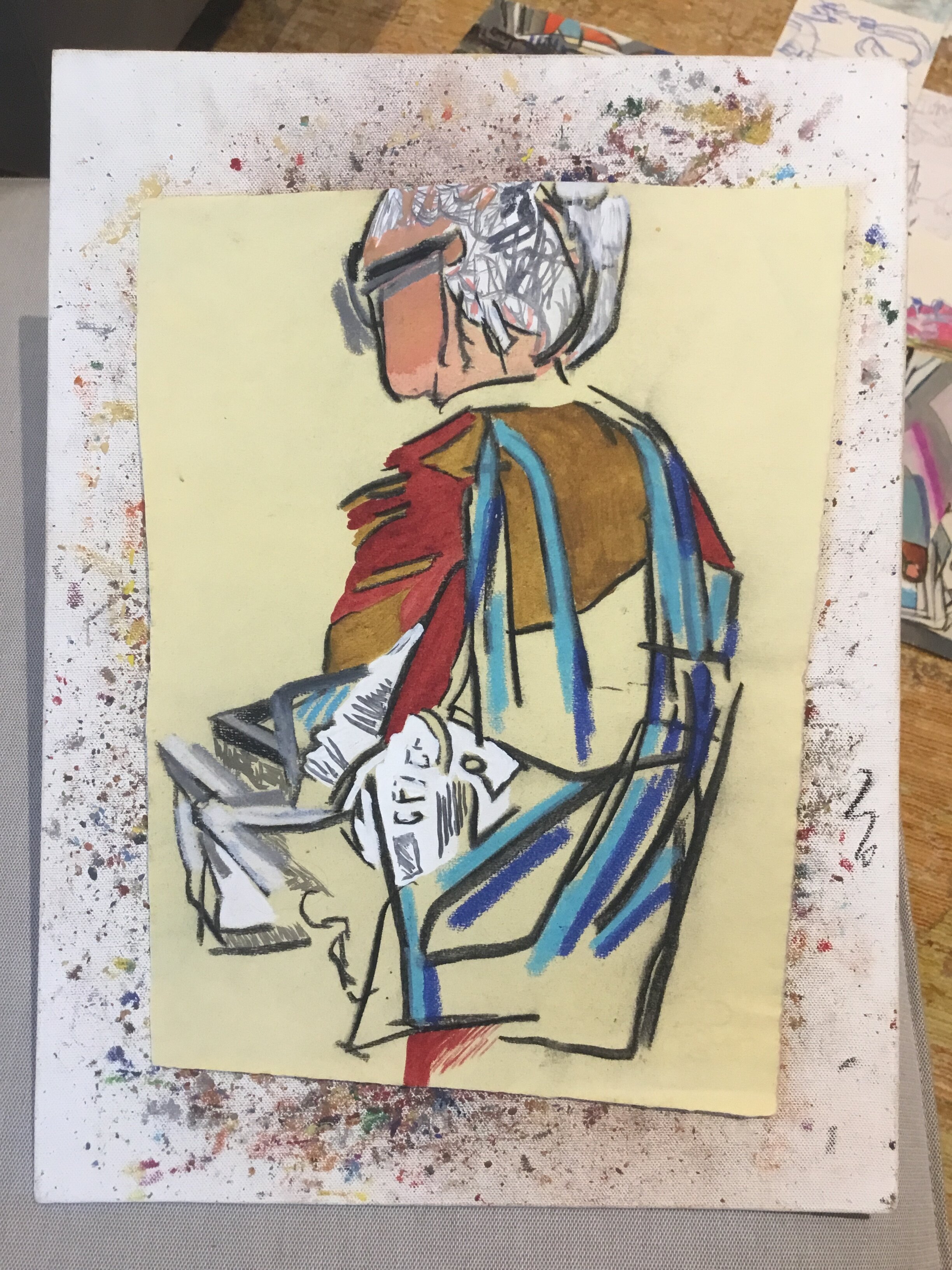Data Protection & Artists
Can drawing people be considered a breach of the Data Protection Act? I started drawing on public transport from 2008. Recently I opened the archive and exhibited all 63 retained drawings in the public domain. The drawings show commuters on the London Underground. No permission was sought from the data subjects depicted. Is this creative action an invasion of Data Subjects’ privacy? The London Underground drawings were started while I was working for London based heritage organisations in c2010. I was travelling via the District, Central and Northern Line for over two hours a day. I was fascinated by the Public Private space. No commuters made an effort to enter conversations with persons they did not know. Groups tended to hush their private conversations. Eye contact was immediately diverted if you happened to catch the eye of another commuter.
Drawing was a challenge, I deliberately chose a small sketchbook and pen to create most of the drawings. This way I could blend into the environment. The majority of individuals carried an object of distraction, books or newspapers. Using fleeting glances, I created basic abstract shapes of the drawing subject matter and later added complicated details in the art studio.
As an artist I was engaged in a practice of collecting personal data. Our facial features and DNA are considered personal data under the General Data Protection Regulation. I operated so not to be detected, similar to how companies’ have collected personal data via social media (literally under the individuals’ gaze). There are exceptions in the Data Protection Act protecting creative actions. Some drawings show data subjects sleeping on the underground. While they are performing an action in a public space, sleeping is vulnerable – does this mean the drawing or the act of drawing is an invasion of privacy? It might be that this question is similar to copyright and collage. If you collage images that retain significant identifying elements of others protected materials. Then you potentially are breaching copyright. It is unlikely the drawings breach Data Protection as the (poorer) quality of craft ensures they do not retain enough identifying personal data.
Out of 200 surviving London Underground drawings, only 63 drawings were selected for the archive. The remaining were destroyed as Artist Archivist deemed their craft quality not suitable for long term preservation. These sampled art records show evidence of creative development. They retain critical historic informational value for Artist Archivist. These were Artist Archivists’ first attempt at creating art concerning the Data Protection Act, and were pivotal in the decision to apply for a Masters degree in archives and records management.


